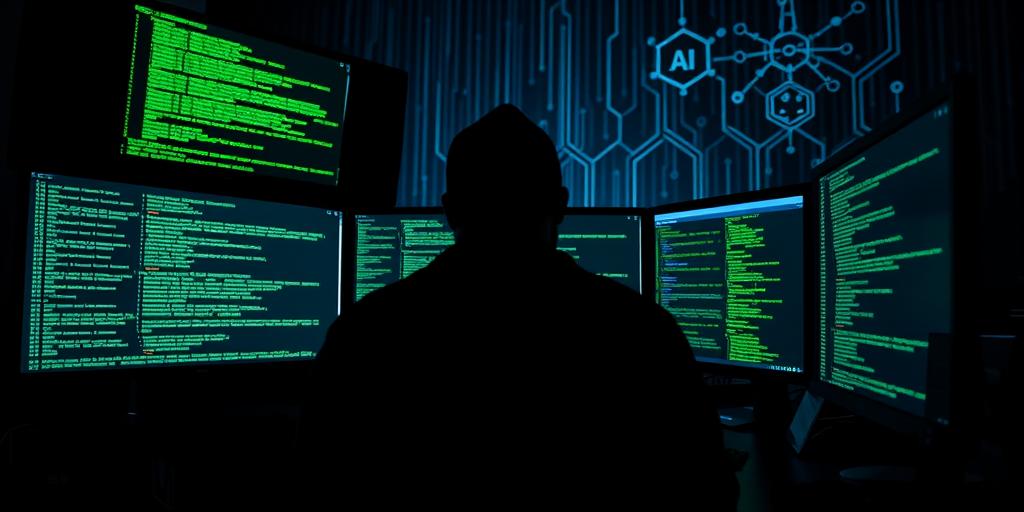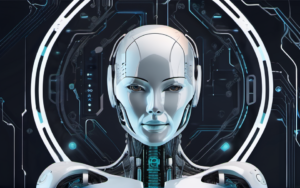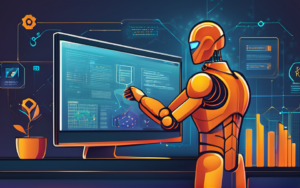The rise of artificial intelligence (AI) has revolutionized many aspects of our lives, but it also presents new challenges, particularly in the realm of cybersecurity. AI Hackers are leveraging this powerful technology to develop sophisticated attacks, making cybersecurity more complex than ever before. Understanding how these AI hackers operate is crucial for developing effective defenses.
The Rise of AI in Cybersecurity
AI’s potential to enhance cybersecurity is immense. AI algorithms can analyze vast amounts of data to identify anomalies and potential threats far faster than any human could. This helps in detecting and responding to cyberattacks in real-time, significantly improving response times. This proactive approach is a vital asset in today’s rapidly evolving threat landscape.
However, the same capabilities that make AI so effective in defense can also be exploited by malicious actors. The duality of AI is a critical factor to consider; it’s a double-edged sword. AI-powered tools can automate tasks that previously required significant human effort, making attacks more efficient and harder to trace. This is where the threat of AI hackers becomes truly concerning.
AI-Powered Hacking Techniques
AI is transforming hacking techniques, leading to increasingly sophisticated and automated attacks. Automated phishing, for example, uses AI to personalize phishing emails, making them more convincing and increasing the likelihood of success. Think highly targeted emails mimicking your bank or even a close friend. This is a significant evolution from the generic spam emails of the past.
AI-driven malware development is another worrying trend. AI algorithms can generate highly mutated malware variants, making it difficult for traditional antivirus software to detect them. These mutations happen rapidly, constantly evading detection methods. It’s an arms race to stay ahead of these evolving threats. Furthermore, AI-assisted reconnaissance and target identification allow hackers to pinpoint vulnerabilities in systems with unprecedented accuracy and efficiency, significantly improving the effectiveness of their attacks.
Defending Against AI-Powered Attacks
Combating AI-powered attacks requires a multi-pronged approach. AI-based security solutions are crucial for detecting and responding to these sophisticated threats in real-time. These solutions often utilize machine learning to identify patterns and anomalies indicative of malicious activity. They can analyze network traffic, user behavior, and system logs to detect unusual patterns and potential threats.
However, relying solely on AI isn’t enough. Human-AI collaboration is essential. AI can assist security professionals by automating tasks and providing insights, but human expertise is still needed to interpret the data, make critical decisions, and develop strategic responses. Combining human intuition and judgment with the analytical power of AI creates a robust defense system. Finally, cybersecurity education and awareness are critical in mitigating the risk of AI-powered attacks. Educating individuals about the latest threats and best practices can significantly reduce their susceptibility to phishing scams and other social engineering techniques. This is especially crucial in light of increasingly sophisticated and personalized attacks.
The Future of AI in Cybersecurity
The future of cybersecurity will likely be characterized by an ongoing arms race between hackers and defenders. As AI-powered attacks become more sophisticated, defenders will need to develop even more advanced AI-based defenses to counter them. This ongoing evolution is a constant challenge demanding continuous innovation and adaptation.
Ethical considerations and regulation will also play a crucial role in shaping the future of AI in cybersecurity. The potential for AI to be misused for malicious purposes necessitates careful consideration of its ethical implications. Appropriate regulations are needed to prevent the development and use of AI for illegal activities, while also promoting responsible innovation. Despite the threats, the potential for AI to enhance cybersecurity is significant. AI can automate many security tasks, improve threat detection, and enhance incident response capabilities. By carefully managing the risks and promoting responsible development, we can harness the power of AI to create a more secure digital world, ultimately mitigating the impact of AI hackers. The key lies in proactive measures, continuous learning, and strategic collaboration between individuals, organizations, and governments worldwide.




